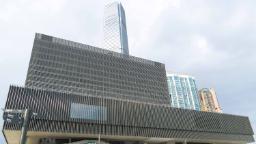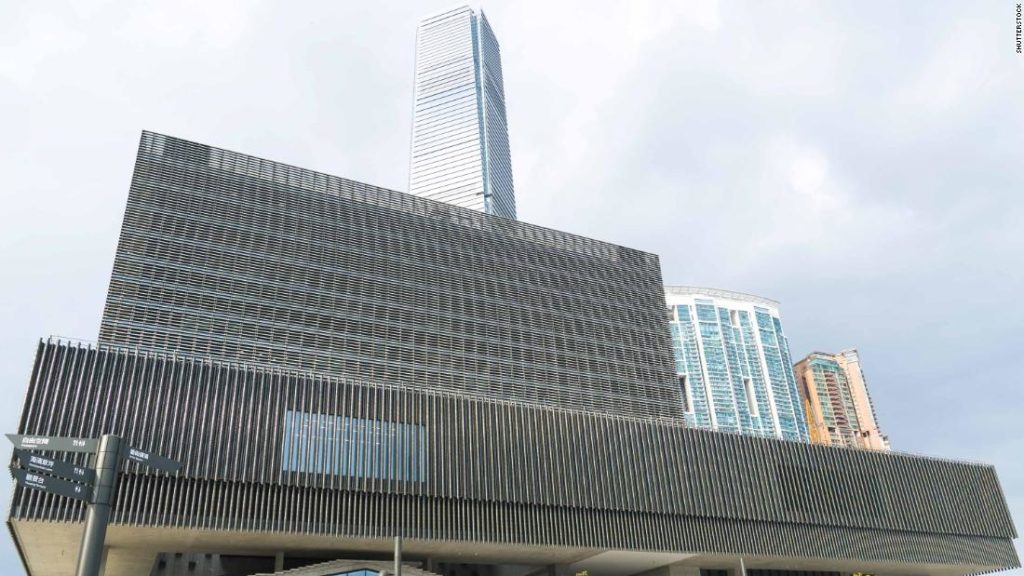
Asked by pro-Beijing lawmaker Eunice Yung whether the long-awaited M+ museum risked “inciting hatred” towards China with some of its artworks, Lam told Hong Kong’s Legislative Council that she recognized concerns that the institution’s exhibits may cross an unspecified “red line.”
She added that her government respects the “freedom of artistic and cultural expression,” but said that since the enactment of the national security legislation — which criminalizes acts of secession, subversion, terrorism, and collusion with foreign forces — “all Hong Kong compatriots are required to safeguard national security.”
Set to open to the public at the end of 2021, M+ will see 17,000 square meters (around 183,000 square feet) of exhibition space set across 33 galleries. Often touted as Asia’s answer to the Museum of Modern Art in New York or the Tate Modern in London, the ambitious museum is the flagship venue of the West Kowloon Cultural District, a sprawling arts quarter built on 100 acres of land reclaimed from Victoria Harbour.
But the introduction of the national security law, a response to the pro-democracy protests that rocked the city in 2019, has raised concerns about the possibility of censorship — or self-censorship — at the museum.
Process of ‘cultural politicization’
The museum is yet to reveal which of the collection’s artworks will be on public display upon its opening later this year. But at a press conference marking the building’s completion last week, director Raffel said that there would be “no problem” displaying Ai’s work or pieces alluding to the Tiananmen Square massacre.
In a statement provided to CNN on Thursday, the publicly funded museum elaborated on its position, saying that it would “comply with the laws of Hong Kong,” while “maintaining the highest level of professional integrity.”
“(The museum’s) exhibition and collection development is based on research and academic rigor,” the statement read. “Like any museum, it is the role of M+ to ensure that our collections and exhibitions are presented in a relevant and appropriate manner to stimulate discussion, research, learning, knowledge and pleasure.”
Thus far, Hong Kong’s national security law has primarily been used against opposition activists and pro-democracy figures, such as media tycoon Jimmy Lai. But it has also coincided with the virtual disappearance of protest art, as well as the growing use of carefully-worded disclaimers by cultural venue attempting to distance themselves from potential wrongdoing.
For artist Kacey Wong, once a regular fixture at Hong Kong’s pro-democracy protests, the legislation’s ambiguous wording leaves it open to abuse by authorities.
“(Carrie Lam’s) so-called ‘red line’ is so flexible that it’s open for the government or its agents to use it to prosecute anybody they don’t like,” Wong said in a phone interview.
“Hong Kong is going through this cultural politicization process right now,” he added. “It’s kind of like what Ai Weiwei (said), that ‘everything is art, everything is politics.'”
According to Wong, these latest controversies collectively point to a wider squeeze on artistic expression.
“All these events are linked together,” he said, adding: “So it’s not just (about) Uli Sigg’s collection — it’s almost a purge within the government systems of arts and culture.”
Top image caption: M+ museum in Hong Kong
You may also like
-
Afghanistan: Civilian casualties hit record high amid US withdrawal, UN says
-
How Taiwan is trying to defend against a cyber ‘World War III’
-
Pandemic travel news this week: Quarantine escapes and airplane disguises
-
Why would anyone trust Brexit Britain again?
-
Black fungus: A second crisis is killing survivors of India’s worst Covid wave

